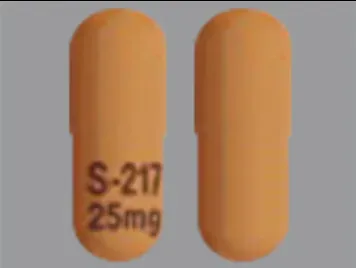Zuranolone Dosage
Medically reviewed by Drugs.com. Last updated on Dec 5, 2023.
Applies to the following strengths: 20 mg; 25 mg; 30 mg
Usual Adult Dose for:
Additional dosage information:
Usual Adult Dose for Postpartum Depression
Recommended dose: 50 mg orally once a day in the evening
Duration of therapy: 14 days
Comments:
- Administer with fat-containing food (e.g., 400 to 1000 calories, 25 to 50% fat)
Use: For the treatment of postpartum depression
Renal Dose Adjustments
- Mild renal impairment (eGFR 60 to 89 mL/min/1.73 m2): No adjustment recommended
- Moderate or severe renal impairment (eGFR less than 60 mL/min/1.73 m2): 30 mg orally once a day in the evening for 14 days
Liver Dose Adjustments
- Mild to moderate liver dysfunction (Child-Pugh A and B): No adjustment recommended
- Severe liver dysfunction (Child-Pugh C): 30 mg orally once a day in the evening for 14 days
Dose Adjustments
Dose Modifications for Concomitant Use with CYP450 3A4 Inhibitors and Inducers:
- CYP450 3A4 Inducers: Avoid concomitant use
- Strong CYP450 3A4 Inhibitors: 30 mg orally once a day in the evening for 14 days when used concomitantly
- Moderate CYP450 3A4 Inhibitors: No adjustment recommended
Central Nervous System (CNS) depressant effects within the 14-day period:
- Consider reducing the dosage to 40 mg once a day in the evening within the 14-day period.
Precautions
US BOXED WARNING:
- IMPAIRED ABILITY TO DRIVE OR ENGAGE IN OTHER POTENTIALLY HAZARDOUS ACTIVITIES: This drug causes driving impairment due to central nervous system (CNS) depressant effects; advise patients not to drive or engage in other potentially hazardous activities until at least 12 hours after administration of this drug for the duration of the 14-day treatment course. Inform patients that they may not be able to assess their own driving competence, or the degree of driving impairment caused by this drug.
CONTRAINDICATIONS: None
Safety and efficacy have not been established in patients younger than 18 years.
Consult WARNINGS section for additional precautions.
US Controlled Substance: Pending
Dialysis
Data not available
Other Comments
Administration advice:
- This drug can be administered alone or as an adjunct to oral antidepressant therapy.
- Safety and effectiveness of use beyond 14 days in a single treatment course have not been established.
- If a dose is missed, the next dose should be taken at regular time the following evening; extra medication should not be taken to make up for a missed dose. Advise the patient to continue the once-daily schedule until the remainder of the 14-day treatment course is completed.
Storage requirements:
- Store at room temperature 20C to 25C (68F to 77F); excursions permitted between 15C to 30C (59F to 86F)
General:
- This drug has a dose-dependent abuse potential with associated risks of misuse and substance use disorder, including addiction. Abuse-related adverse reactions included euphoric mood, feeling drunk, and somnolence. Individuals with a history of drug abuse or substance use disorders may be at a higher risk. Healthcare providers should assess and discuss these risks with patients.
- This drug may cause physical dependence; adverse reactions reported upon discontinuation included insomnia, palpitations, decreased appetite, nightmares, nausea, hyperhidrosis, and paranoia. Healthcare providers should assess and discuss this with patients.
Patient advice:
- Read the US FDA-approved patient labeling (Package Information and Instructions for Use).
- This drug will impair your ability to drive or engage in hazardous activities. Take this drug in the evening and do not perform any activity that requires alertness after.
- Dizziness, sedation, and confusion have been reported with this drug. Do not take this drug with alcohol or any other medication.
- Contact your healthcare provider immediately if you experience thoughts of suicide.
- Take this medication with fat-containing foods and take the next scheduled dose if you miss a dose.
- This drug has the potential for abuse, misuse, and dependence; do not take more than advised by your healthcare provider.
- Patients of childbearing potential should use highly effective contraception during therapy and for 1 week after the last dose; notify your healthcare provider if you become pregnant.
- Pregnant patients should discuss with their healthcare provider about the risk to the fetus and registering at the pregnancy exposure registry that monitors outcomes while on this drug.
Frequently asked questions
More about zuranolone
- Check interactions
- Compare alternatives
- Side effects
- During pregnancy
- Drug class: miscellaneous antidepressants
- Breastfeeding
- En español
Patient resources
Other brands
Professional resources
Other brands
Related treatment guides
See also:
Further information
Always consult your healthcare provider to ensure the information displayed on this page applies to your personal circumstances.


